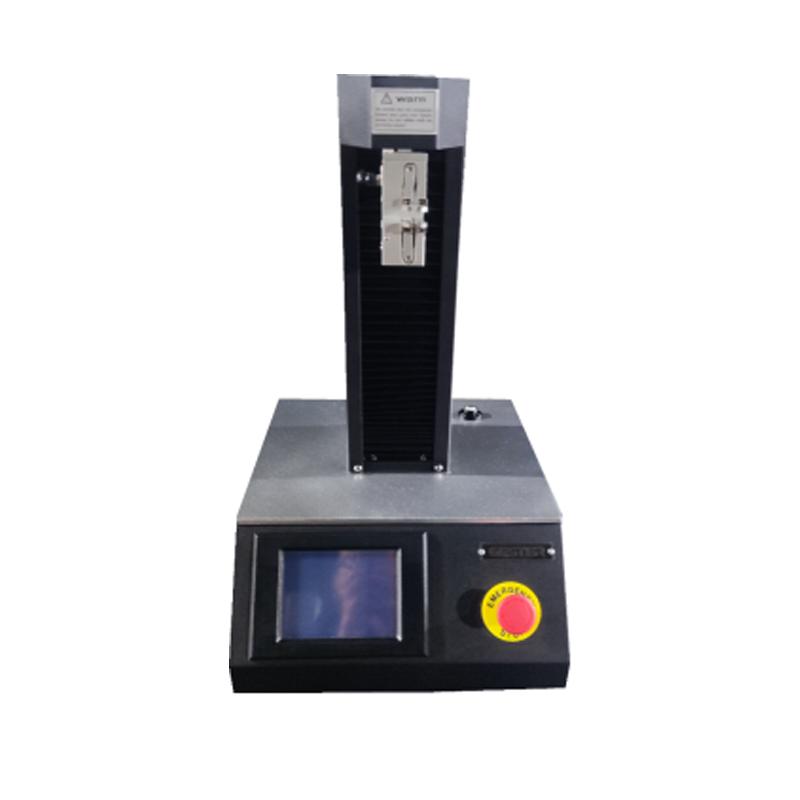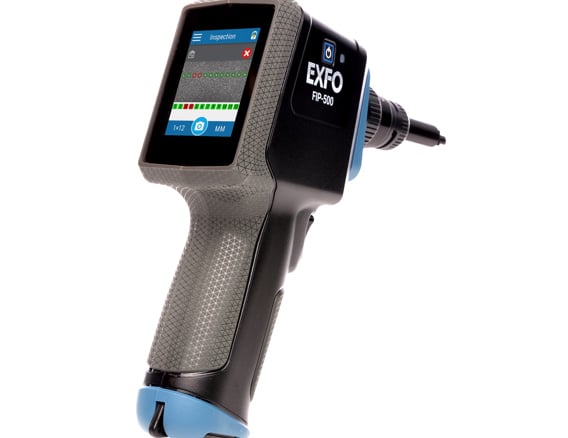The Relevance of an Optical Fibre Diameter Analyser in Preserving Sector Requirements
The importance of an Optical Fibre Diameter Analyser can not be overemphasized in the context of sector criteria. This modern technology ensures accurate measurements, which are vital for optimal signal transmission and minimized attenuation. By identifying incongruities early, suppliers can copyright rigorous quality assurance actions. Nonetheless, the ramifications of these measurements extend past conformity. Revealing the wider effect on system efficiency discloses complexities that warrant additional expedition.
Comprehending Optical Fibre Diameter Analysis
Optical fibre diameter evaluation plays a crucial function in guaranteeing the efficiency and dependability of fibre optic systems. Accurate dimension of fibre diameter is essential, as it directly influences signal transmission performance and overall system honesty. Variations in diameter can lead to boosted attenuation, minimized bandwidth, and higher susceptibility to environmental variables.
By using specific dimension strategies, producers can maintain strict high quality control, making sure that fibres satisfy sector requirements. This evaluation also promotes the identification of defects or incongruities during manufacturing, enabling timely rehabilitative actions.
Recognizing the diameter parameters aids in the selection of ideal ports and installations, thus improving compatibility within the network. On the whole, complete optical fibre diameter evaluation is a fundamental aspect of fibre optic innovation, underpinning improvements in telecoms, information transmission, and various applications across different industries.
Trick Attributes of Optical Fibre Diameter Analysers
Optical fibre diameter analysers are equipped with several key functions that improve their performance. Significant amongst these are accuracy measurement capabilities, which guarantee accurate readings, and real-time monitoring features that offer immediate feedback during the analysis procedure. In addition, a straightforward user interface style promotes very easy procedure, making these tools easily accessible to a broader series of individuals.
Precision Measurement Capabilities
When it concerns ensuring high-grade fibre manufacturing, accuracy measurement capacities are paramount in diameter analysers. These tools make use of sophisticated innovations to deliver accurate measurements of fibre diameter, allowing suppliers to maintain strict resistances. High-resolution optics and advanced algorithms make it possible for the discovery of minute variants in diameter, necessary for creating reliable and regular optical fibers. Additionally, the ability to determine across a large range of diameters boosts versatility, fitting numerous production demands. The combination of calibration criteria makes sure that measurements continue to be precise over time, lowering the danger of flaws. By employing these precision dimension capacities, makers can copyright market standards, enhance item high quality, and inevitably drive consumer contentment in the competitive fibre optics market.
Real-Time Tracking Attributes
Real-time monitoring attributes are vital for improving the performance and effectiveness of fibre manufacturing procedures. These capabilities make it possible for continuous evaluation of optical fibre diameter throughout production, ensuring that any kind of variances from defined standards are quickly spotted. By giving instant comments, suppliers can promptly change specifications, minimizing waste and keeping quality assurance. Furthermore, real-time tracking promotes the recognition of fads and patterns in manufacturing information, providing beneficial insights for process optimization. The combination of these attributes right into optical fibre diameter analysers sustains proactive decision-making, empowering operators to respond swiftly to potential issues. Consequently, the implementation of real-time monitoring not just maintains market requirements however also enhances overall efficiency and product dependability.
User-Friendly User Interface Style
A well-designed user interface is necessary for the efficient operation of optical fibre diameter analysers. Such interfaces focus on simpleness and access, enabling individuals to navigate the system easily. Key attributes commonly include intuitive food selections, clear visual depictions of data, and customizable settings to fit numerous individual preferences. Real-time feedback devices enhance the individual experience by providing prompt insights right into measurements. In addition, efficient error messaging guides customers in repairing problems promptly, lessening downtime. The consolidation of touchscreens and receptive styles further facilitates interaction, making it less complicated for technicians to run the analyser in diverse settings. Eventually, an user-friendly user interface not only improves efficiency yet likewise boosts the general precision of the measurements, contributing to sector standards in optical fibre production.
The Duty of Diameter Dimension in Quality Control
Diameter measurement may seem like a small information in the manufacturing of optical fibres, it plays a considerable duty in ensuring overall high quality control. Uniformity in diameter is important for preserving the optical efficiency and structural integrity of the fibres. Variations in diameter can cause concerns such as signal loss, increased attenuation, and decreased tensile stamina, eventually endangering the reliability of the fibre in various applications.
Quality control processes integrate accurate diameter measurement to find issues early in manufacturing. By applying an optical fibre diameter analyser, producers can identify any discrepancies from specified tolerances, assisting in instant rehabilitative activities. This aggressive strategy not just enhances item top quality but also minimizes waste and reduces manufacturing prices.

Compliance With Market Standards and Laws
Conformity with industry requirements and regulations is important for the exact operation of an optical fibre diameter analyser. Sticking to these standards guarantees that makers keep high quality control throughout the manufacturing procedure. Meeting regulative demands not just enhances product dependability yet also fosters customer trust.
Making Sure Quality Assurance
Making sure adherence to sector standards is necessary for keeping the honesty and efficiency of optical fibre items. Quality assurance plays a crucial role in this process, as it involves the methodical monitoring of fibre diameter to ensure uniformity and dependability. An optical fibre diameter analyser is a crucial tool in accomplishing these high quality standards, giving specific dimensions that assist recognize inconsistencies from developed specs. By utilizing this technology, suppliers can promptly find and deal with any anomalies, making certain that items fulfill the required efficiency standards. Routine assessment through such analysers not important link just supports item high quality but additionally improves customer trust fund and satisfaction. Inevitably, robust quality assurance procedures promote a competitive side in the optical fibre industry, advertising long-lasting success and conformity with requirements.
Meeting Governing Requirements
As makers navigate the intricacies of the optical fibre sector, meeting regulative needs becomes crucial for guaranteeing product safety and security and performance. Conformity with industry standards not only minimizes potential threats but likewise improves customer self-confidence in the products provided. An optical fibre diameter analyser plays an essential duty in this procedure, allowing makers to verify that their products stick to specified dimensions and tolerances. By utilizing such analyzers, business can assure that their optical fibers fulfill the rigorous regulations set forth by industry authorities. This proactive method to high quality guarantee not just promotes conformity yet also enhances the manufacturing process, decreasing the probability of pricey recalls or denials. Inevitably, adherence to governing criteria is essential for preserving an affordable side in the marketplace.
Advantages of Accurate Diameter Measurement

Accurate diameter measurement plays an important function in the performance and reliability of optical fibres. Making certain that fibers fulfill defined diameter resistances lessens signal loss and maximizes transmission efficiency, directly impacting total system performance. This precision is vital in maintaining perfect light propagation, as even minor discrepancies can cause raised depletion and reduced optical signal quality.
Moreover, exact measurements boost compatibility between parts in fibre optic systems, assisting in smooth combination and minimizing the risk of failures. Consistent diameter dimensions likewise contribute to improved production processes by recognizing prospective flaws early, consequently decreasing waste and lowering manufacturing expenses.

Integrating Optical Fibre Diameter Analysers Into Production
Integrating optical fibre diameter analysers right into manufacturing processes enhances the ability to maintain stringent top quality control actions. By utilizing these analysers, producers can accomplish exact and constant dimensions of fibre sizes, which is crucial for ensuring product performance and reliability. The combination process usually entails placing analysers at bottom lines along the assembly line, enabling real-time monitoring and immediate feedback on diameter variations.
This positive method enables quick adjustments to the production specifications, decreasing the risk of flaws and waste. In addition, the data accumulated can be used for analytical process control, adding to constant improvement initiatives. Operators are empowered with actionable understandings that assist in informed decision-making pertaining to material use and production strategies. Ultimately, the consolidation of optical fibre diameter analysers not only improves item quality yet also sustains conformity with market criteria, reinforcing a business's reputation for excellence in the affordable optical fibre market.
Future Trends in Optical Fibre Measurement Innovation
Arising developments in optical fibre dimension modern technology are poised to reinvent the sector. The incorporation of expert system and artificial intelligence is prepared for to enhance precision and efficiency in diameter analysis. These innovations enable real-time data handling, enabling prompt adjustments during production, therefore lessening waste. In addition, the development of non-contact dimension methods assures over at this website a decrease in physical interaction with fibers, protecting their stability.
Additionally, miniaturization of measurement devices is expected to result in even more mobile and user-friendly services, facilitating on-site evaluations. fibre testing equipment. Assimilation with IoT systems will make it possible for remote monitoring and data collection, promoting boosted anticipating maintenance and high quality control
As markets significantly require greater performance standards, the evolution of optical fibre dimension tools will play a crucial role in fulfilling these assumptions, guaranteeing that producers can consistently supply high-grade items while adhering to rigorous regulative requirements.
Regularly Asked Concerns
How Often Should Optical Fibre Diameter Measurements Be Performed?
Frequency of optical fibre diameter measurements commonly depends upon production quantity and quality needs. Routine checks, often daily or weekly, aid ensure constant high quality and adherence to specifications, minimizing potential defects in fibre production procedures.
What Are the Normal Expenses of Optical Fibre Diameter Analysers?
The common costs of optical fibre diameter analysers vary widely, varying from a number of thousand to tens of thousands of dollars, relying on features, accuracy, and producer, influencing choices for companies buying high quality measurement innovation.
Can Diameter Analysers Be Adjusted On-Site?
Diameter analysers can frequently be adjusted on-site, enabling instant changes to ensure precision. However, the certain treatments and requirements might differ depending upon the supplier's guidelines and the innovation made use of in the analyser.
What Types of Fibres Can Be Measured With These Analysers?
Optical fibre diameter analysers can gauge various fibre types, including single-mode, multi-mode, specialty, and large-core fibres. Each kind calls for specific calibration settings to guarantee accurate and trusted diameter dimensions throughout the manufacturing procedure.
Are There Details Upkeep Needs for Diameter Analysers?
Diameter analysers require regular calibration to guarantee accuracy, along with routine cleaning to stop particles accumulation. Furthermore, check examining software application updates and evaluating mechanical parts add to their excellent efficiency and long life in gauging fibre sizes successfully.